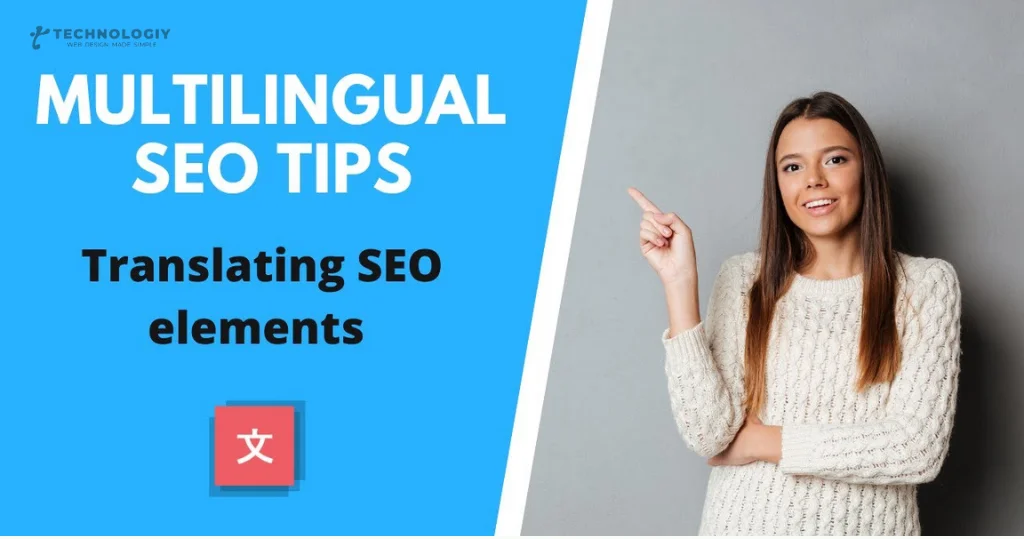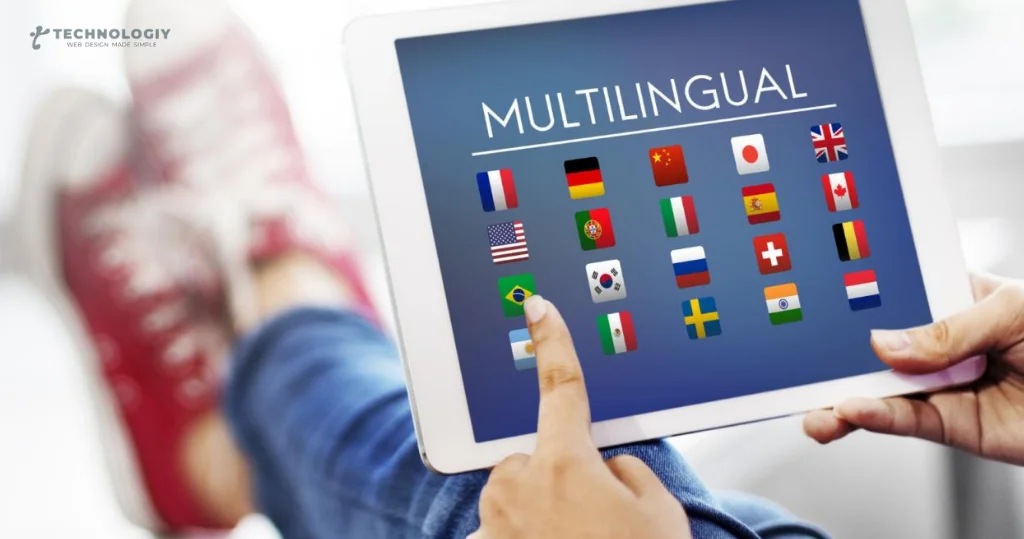The Ultimate Guide to Multilingual WordPress SEO: Boosting Your Website’s Visibility Welcome, fellow website owners and digital enthusiasts! Today, we are diving deep into the world of Multilingual WordPress SEO. If you are looking to expand your website’s reach and visibility across different languages, you’ve come to the right place. In this comprehensive guide, we will walk you through the steps to optimize your Multilingual WordPress SEO website and skyrocket its online presence. So, let’s get started!
Why Multilingual SEO Matters:
In our increasingly connected world, catering to a global audience has become essential. By adding multiple languages to your WordPress website, you open doors to new markets and increase your chances of reaching a wider audience. To truly maximize your website’s potential, you need to implement multilingual SEO strategies.
Multilingual SEO involves optimizing your website for search engines in multiple languages. By doing so, you enhance your website’s visibility and improve its chances of ranking higher in search engine results pages (SERPs) across different languages. This, in turn, drives more organic traffic to your website and boosts your online presence.
Getting Started with Multilingual WordPress SEO:
Choose the Right Multilingual Plugin:
To begin your multilingual SEO journey, you need a reliable multilingual plugin for your WordPress website. There are several great options available, such as WPML, Polylang, and Weglot. These plugins make it easy to manage and translate your content into different languages, while also providing SEO-friendly features.
Conduct Keyword Research:
Keyword research is a crucial step in any SEO strategy, and multilingual SEO is no exception. Start by identifying the keywords and phrases your target audience is using in different languages. This will help you create content that aligns with their search intent, improving your chances of ranking higher in SERPs.
Implement hreflang Tags:
Hreflang tags are HTML attributes that tell search engines which language(s) your content is available in. By implementing hreflang tags correctly, you ensure that search engines display the appropriate language version of your website to users in different locations. This helps avoid duplicate content issues and improves user experience.
Optimize Your Content for Multilingual SEO:
When creating content in multiple languages, it’s important to optimize each version individually. This means conducting language-specific keyword research and incorporating those keywords naturally throughout your content. Additionally, pay attention to meta tags, headings, URLs, and alt tags to ensure they are optimized for each language.
Build High-Quality Backlinks:
Just like in traditional SEO, building high-quality backlinks is essential for multilingual SEO. Focus on acquiring backlinks from reputable websites in each language you target. This will not only boost your website’s authority but also improve its chances of ranking higher in SERPs.

Localize Your Content:
Localization goes beyond translation. It involves adapting your content to the cultural, linguistic, and regional preferences of your target audience. By localizing your content, you create a more personalized and engaging experience for your users, increasing their likelihood of staying on your website and converting.
Monitor and Analyze Your Results:
Once you have implemented multilingual SEO strategies, it’s crucial to monitor and analyze your website’s performance. Keep an eye on your website’s rankings, organic traffic, bounce rates, and conversion rates across different languages. This data will help you identify areas for improvement and fine-tune your multilingual SEO efforts.
Congratulations on completing the ultimate guide to Multilingual WordPress SEO! By implementing the strategies outlined in this guide, you are well on your way to boosting your website’s visibility across different languages. Remember, multilingual SEO is an ongoing process that requires continuous monitoring and adjustment. Stay up to date with the latest SEO trends and algorithm updates to ensure your website remains competitive in the global market. Best of luck on your multilingual SEO journey!
Multilingual WordPress SEO Best Practices for Higher Rankings:
Are you looking to expand your online presence to reach a wider audience? If so, then Multilingual WordPress SEO should be at the top of your priority list. With the right strategies in place, you can ensure that your website ranks higher and attracts visitors from different language backgrounds. In this blog post, we will explore the best practices for Multilingual WordPress SEO that can help you achieve your goals and boost your rankings.
Choose the Right Multilingual Plugin:
The first step in optimizing your WordPress website for multiple languages is selecting the right multilingual plugin. There are several options available, such as WPML, Polylang, and Weglot. These plugins make it easy to translate your content and maintain separate language versions of your website.
Conduct Keyword Research for Each Language:
Just like with regular SEO, keyword research is crucial for Multilingual WordPress SEO. Take the time to identify relevant keywords for each language you want to target. Use tools like Google Keyword Planner, SEMrush, or Ahrefs to find popular keywords with high search volume. Optimize your content by incorporating these keywords naturally into your titles, headings, and body text
Create Separate URLs or Subdomains for Each Language:
To optimize your website for multilingual SEO, it’s important to create separate URLs or subdomains for each language version. This helps search engines understand that your website is available in different languages and improves the user experience. Make sure to use language-specific URLs or subdomains, such as “yourdomain.com/es” for Spanish or “es.yourdomain.com” for the Spanish version.
Use hreflang Tags;
Hreflang tags are HTML attributes that indicate the language and geographical targeting of a webpage. They help search engines understand the relationship between different language versions of your content. Implement hreflang tags in the head section of your HTML code to signal to search engines that you have multiple language versions available.
Translate Metadata and Alt Tags:
Don’t forget to translate your metadata and alt tags when optimizing your website for multilingual SEO. Metadata, such as title tags and meta descriptions, should be translated to match the language of each page. Alt tags for images should also be translated to provide accurate information to users.
Implement Language Switcher:
Make it easy for visitors to switch between different language versions of your website by implementing a language switcher. This can be a dropdown menu, flags, or any other user-friendly interface that allows users to choose their preferred language. The language switcher should be prominently displayed and easily accessible from any page.
Localize Content for Each Language:
Localization goes beyond translation. It involves adapting your content to the local language, culture, and preferences of your target audience. This includes using the appropriate date formats, currencies, units of measurement, and cultural references. Localizing your content shows that you care about providing a personalized experience to your visitors and can significantly improve your SEO efforts.
Build High-Quality Backlinks for Each Language Version:
Backlinks are an essential aspect of SEO, and this applies to Multilingual WordPress SEO as well. When building backlinks, make sure to target websites and directories that are relevant to each language version of your website. This will help search engines understand the authority and relevance of your website in different languages, improving your rankings.
Regularly Update and Optimize Your Content:
SEO is an ongoing process, and the same applies to Multilingual WordPress SEO. Regularly update and optimize your content to ensure it remains relevant and engaging for your target audience. Monitor your rankings and make necessary adjustments to improve your visibility in different languages.
By following these Multilingual WordPress SEO best practices, you can increase your chances of ranking higher in search engine results and attracting a diverse audience. Remember to choose the right multilingual plugin, conduct keyword research for each language, create separate URLs or subdomains, use hreflang tags, translate metadata and alt tags, implement a language switcher, localize your content, build high-quality backlinks, and regularly update and optimize your content. With these strategies in place, you’ll be well on your way to achieving higher rankings and reaching a wider audience.
How to Implement Multilingual WordPress SEO on Your WordPress BlogIntroduction:
Welcome, fellow bloggers, to our friendly guide on implementing multilingual SEO on your WordPress blog. In today’s interconnected world, reaching a global audience is crucial for the success of your website. By making your content accessible in multiple languages, you can tap into new markets and attract a diverse range of visitors. In this article, we will show you how to optimize your WordPress blog for multilingual SEO, ensuring that your content speaks to audiences around the world.
Why Multilingual WordPress SEO Matters:
Implementing multilingual SEO is not just about translating your content. It’s about making your website appear in search results when users search in different languages. By doing so, you increase your chances of attracting organic traffic from users who prefer to browse in their native language. This can lead to higher engagement, increased conversions, and ultimately, a broader reach for your blog.
Choosing a Multilingual WordPress Plugin:
To begin your multilingual SEO journey, you’ll need a reliable WordPress plugin. Luckily, there are several great options available that can effortlessly handle the complexities of multilingual content. Some of the popular plugins include WPML, Polylang, and TranslatePress. These plugins will enable you to create language-specific versions of your blog, optimize meta tags, and manage translations seamlessly.
Keyword Research for Multilingual SEO:
When it comes to optimizing your Multilingual WordPress SEO blog, keyword research is essential. Start by identifying the keywords and phrases your target audience is using in different languages. Tools like Google Keyword Planner and SEMrush can help you discover popular search terms and their search volume in specific regions. Incorporate these keywords naturally into your content, meta tags, and URLs for maximum visibility.
Translating Content:
While automatic translation tools might be tempting, they often result in poor translations that can harm your SEO efforts. Instead, consider working with professional translators who understand the nuances of the target language. This ensures accuracy, maintains the quality of your content, and enhances your credibility. Additionally, it’s crucial to avoid duplicate content issues by using hreflang tags to indicate the language and country targeting of each page.
Optimizing URLs and Meta Tags:
Optimizing your URLs and meta tags for multilingual SEO is vital. Ensure that your URLs include the language parameter and target keywords. For example, yourblog.com/en/article-title or yourblog.com/fr/titre-article. Similarly, optimize your meta titles, descriptions, and headings by incorporating relevant keywords in the target language. This will help search engines understand the language and topic of your content, improving its visibility in search results.
Localizing Images and Media:
To enhance the user experience, consider localizing your images and media content. This includes providing alternative text, captions, and descriptions in the target language. Localizing images not only improves accessibility but also helps search engines understand the context of your content, boosting its relevance in multilingual search results.
Building Multilingual Backlinks:
Backlinks are an essential part of any SEO strategy, including multilingual SEO. To build a strong backlink profile for your Multilingual WordPress SEO blog, reach out to relevant websites and bloggers in your target language. Collaborate on guest posts, contribute valuable content, and engage with local communities to earn high-quality backlinks. This will not only improve your search engine rankings but also increase your visibility within specific language markets.
Congratulations on taking the first step towards implementing multilingual SEO on your WordPress blog! By optimizing your content for different languages, you open your blog to a world of opportunities. Remember to choose a reliable multilingual WordPress plugin, conduct thorough keyword research, translate your content professionally, and optimize your URLs, meta tags, and media for each language. With these strategies in place, you’ll be well on your way to reaching and engaging with a global audience through your multilingual WordPress blog. Happy blogging!
